
Roots
The quiet hum of inquiry often begins with a gentle pull from the past, a soft whisper of ancestral wisdom. When we consider the rich textures of hair, particularly those that coil and curve with inherent grace, a curiosity awakens ❉ what knowledge did those who came before us hold about their care? This quiet contemplation frequently leads to silk, a material revered across civilizations for its delicate touch and remarkable properties. Its presence in ancient hair practices, spanning continents and centuries, speaks not merely of luxury but of an intuitive understanding of hair’s fundamental needs.
The stories embedded in historical artifacts and texts, the traditions passed through generations, offer a profound lens through which to view our contemporary textured hair regimens. These are not disparate worlds but interconnected narratives, each informing the other, inviting us to rediscover foundational truths about protection and preservation.
Understanding the very structure of textured hair forms the bedrock of any meaningful discussion. Each strand, a testament to biological marvel, possesses a unique architecture. The outer layer, the cuticle, resembles overlapping scales, providing a protective shield for the inner cortex.
In textured hair, these scales naturally tend to be more lifted, contributing to its distinct appearance and, at times, its vulnerability to moisture loss and mechanical stress. The shape of the hair follicle itself dictates the curl pattern, from gentle waves to tightly wound coils, influencing how oils travel down the strand and how light reflects, creating a characteristic radiance.
Ancient wisdom regarding silk for hair care offers foundational insights for modern textured hair regimens.
Across various cultures, the deep connection between hair and identity is unmistakable. In ancient Egypt, elaborate wigs, sometimes crafted from human hair and even silk, served not only as fashion statements but also as indicators of social status and protection from the harsh desert climate. The meticulous care of these adornments speaks volumes about the value placed on hair. Similarly, in many African communities, head coverings, often made of silk or other fine materials, carried profound social, spiritual, and protective meanings.
These practices underscore a universal recognition of hair as more than mere adornment; it is a living crown, deserving of gentle attention and deliberate safeguarding. The foresight of these early practitioners, in selecting materials like silk, reveals an inherent wisdom regarding hair’s delicate nature, a wisdom that resonates with our contemporary understanding of hair science.
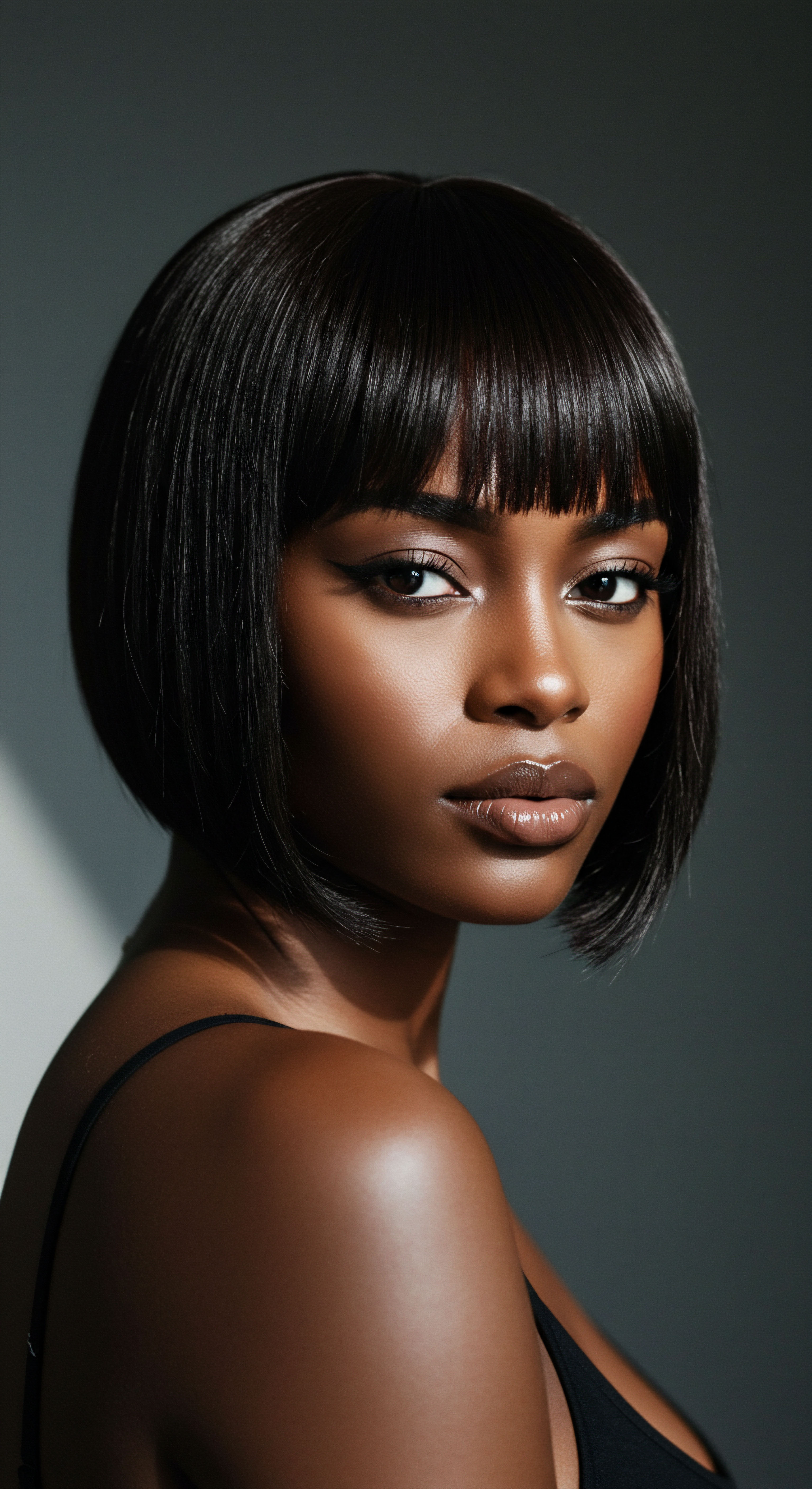
Ancient Hair Care Practices with Silk
The use of silk in ancient hair care is a testament to its enduring properties. From the opulent courts of Tang Dynasty China, where silk hair wraps signified status and protected intricate styles, to the desert climates of North Africa and the Middle East, where silk scarves shielded strands from environmental aggressors, this material consistently appeared. In India, historical texts allude to silk’s use in hair rituals, prized for its ability to reduce friction and preserve moisture.
Even in parts of West Africa, silk headwraps, like the ‘gele’ in Nigeria, were worn for special occasions, reflecting cultural heritage and offering a protective embrace. These practices were not random acts of luxury but deliberate choices, recognizing silk’s inherent smoothness and its capacity to mitigate damage.
- Chinese Imperial Practices ❉ Empress Leizu is credited with the discovery of silk around 2700 BC. Silk hair wraps became commonplace for protection and as a marker of social standing during the Tang Dynasty, often adorned with elaborate embroidery.
- North African Protection ❉ Moroccan women used silk scarves, known as ‘m’hajeb’, to shield their hair from dry, windy conditions, often decorated with regional artistry.
- South Asian Rituals ❉ Ancient Indian practices referenced silk for its luxurious feel and its role in reducing friction and breakage, preserving hair from dust, sun, and pollution.
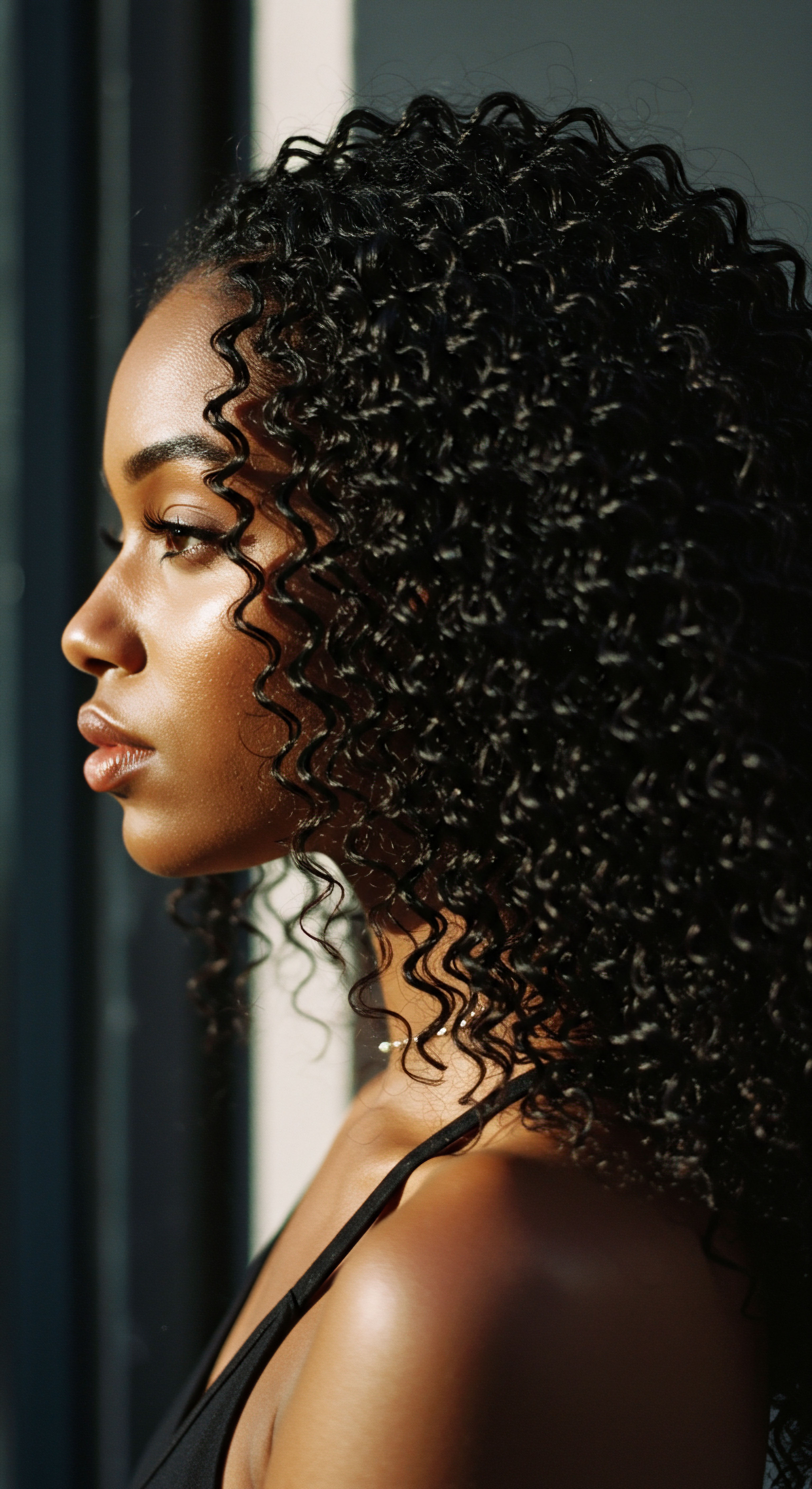
The Hair’s Fundamental Needs
Regardless of curl pattern or cultural context, hair shares fundamental needs for health and vitality. These include adequate moisture, minimal mechanical stress, and protection from environmental elements. The cuticle, that outermost layer of scales, is particularly vulnerable. When these scales are lifted or damaged, hair can become dry, brittle, and prone to tangles and breakage.
Ancient practitioners, perhaps without the lexicon of modern science, intuitively understood these principles. Their choice of silk, with its smooth surface, directly addressed the need to minimize friction, a primary culprit in cuticle damage.
| Hair Need Moisture Retention |
| Challenge for Textured Hair Open cuticle structure, faster evaporation |
| Ancient Silk Solution Less absorbent than cotton, helps retain natural oils |
| Hair Need Friction Reduction |
| Challenge for Textured Hair Increased points of contact, prone to tangles |
| Ancient Silk Solution Smooth surface allows hair to glide, prevents snagging |
| Hair Need Environmental Shield |
| Challenge for Textured Hair Exposure to sun, dust, dry air |
| Ancient Silk Solution Physical barrier against external aggressors |
| Hair Need Understanding these fundamental needs helps connect historical practices with contemporary hair care. |
The continuity of these needs across millennia is a compelling argument for revisiting ancient wisdom. While modern science provides us with microscopic views and chemical compositions, the basic challenges of maintaining hair health remain strikingly similar. The desert winds of ancient Egypt, the dry air of historical Morocco, and the daily movements of sleep all presented forces that could compromise hair’s integrity. Silk, through its inherent qualities, offered a gentle countermeasure, a protective embrace that preserved both style and health.
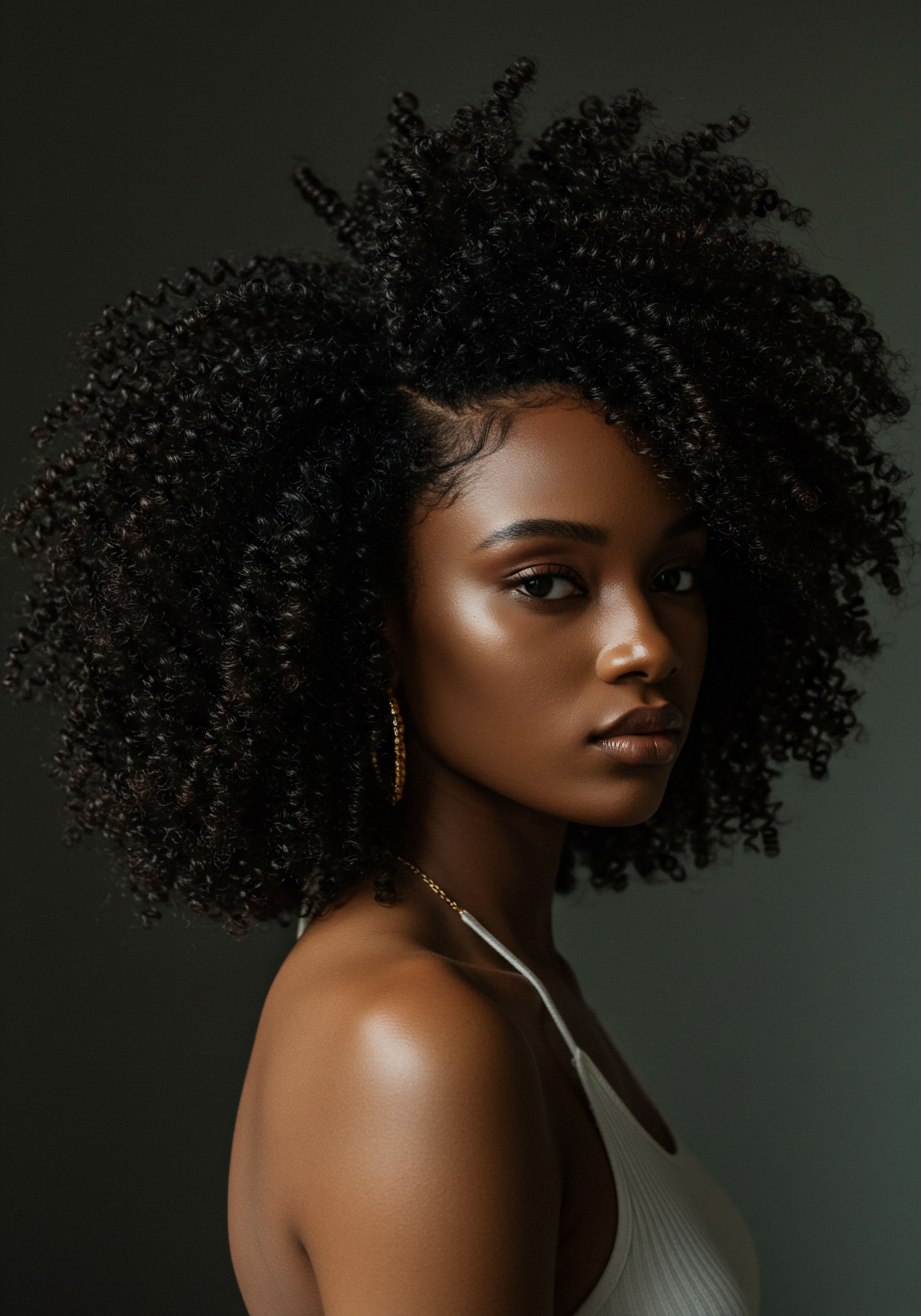
Ritual
Stepping from the quiet contemplation of roots, our focus now shifts to the rhythmic, intentional movements that define hair care as a ritual. It is in the daily or nightly practices that we truly shape the vitality of our strands. The gentle unwrapping of a silk head covering, the smooth glide of a comb through hair that has rested undisturbed, these are not mere tasks but moments of mindful engagement. This section invites us to consider how the consistent, purposeful application of silk in ancient times can illuminate and refine our contemporary regimens for textured hair, moving beyond a superficial understanding to a deeper, more actionable wisdom.
The daily life of ancient civilizations, while distinct from our own, shared common threads of protecting and preserving one’s hair. For those with textured hair, the challenges of tangles, breakage, and moisture loss are enduring. The rough surfaces of common sleeping materials, the harshness of environmental elements, and the constant friction of movement have always posed threats. It is here that silk emerges as a consistent solution across diverse cultures, not just as a fabric for grand occasions but as a practical, everyday tool for maintaining hair’s serenity.
Daily engagement with silk in ancient hair rituals provides a blueprint for contemporary protective practices.
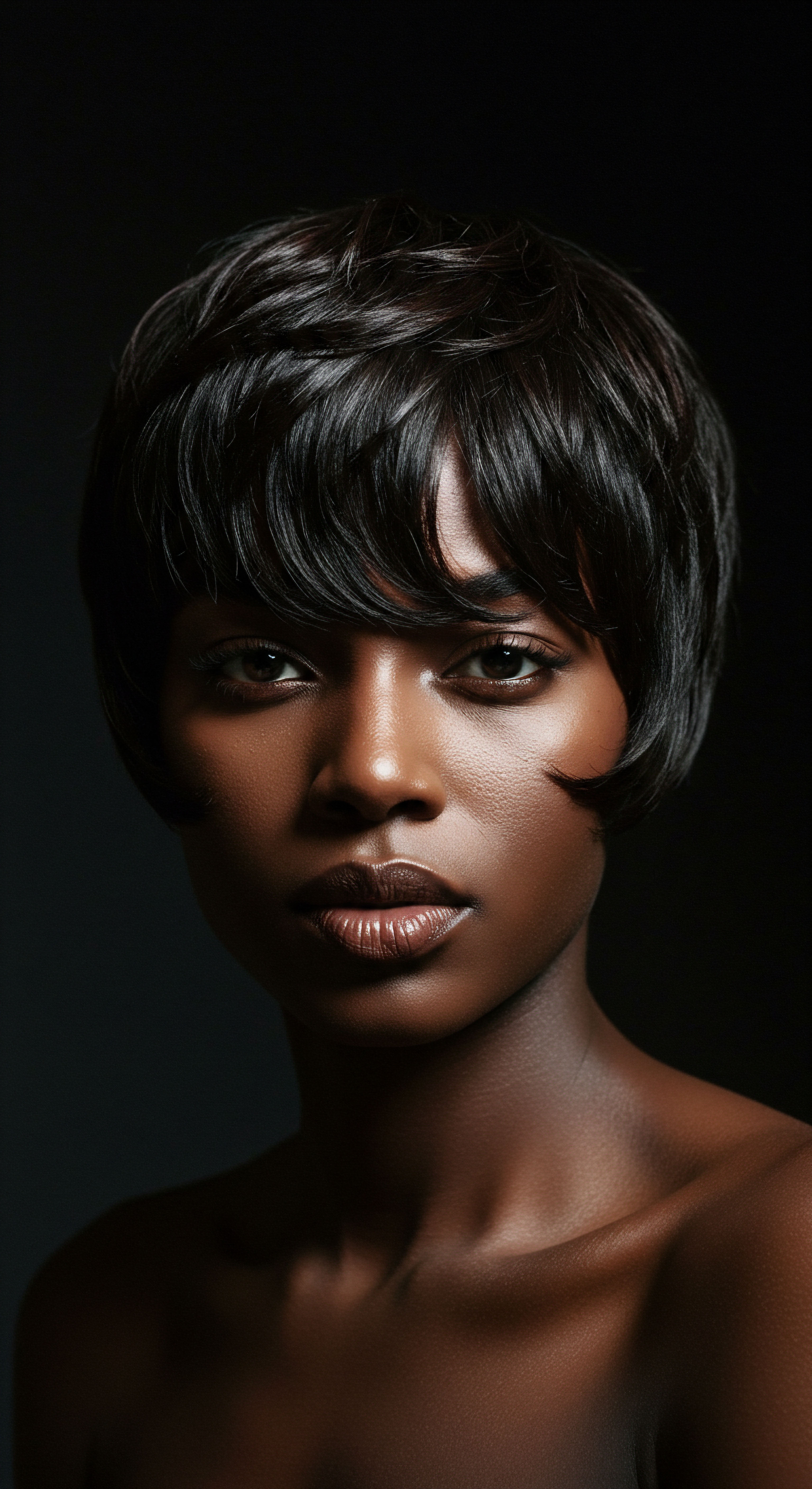
The Nighttime Sanctuary
The quiet hours of sleep, often overlooked, hold significant potential for hair damage. As we shift and turn, our hair experiences friction against pillowcases, leading to raised cuticles, tangles, and breakage. This is particularly pronounced for textured hair, which, with its unique coil patterns, can be more prone to snagging and disruption.
Ancient cultures, perhaps without precise scientific instruments, understood this vulnerability. The widespread use of silk bonnets, scarves, and head wraps for sleeping, documented across various historical periods and regions, stands as a testament to this understanding.
- Preserving Moisture ❉ Unlike absorbent cotton, silk does not draw moisture from the hair, allowing natural oils and applied products to remain on the strands. This is vital for textured hair, which often struggles with maintaining hydration.
- Reducing Friction ❉ The smooth surface of silk creates significantly less friction than coarser fabrics. This gentle interaction minimizes tangles, frizz, and mechanical damage to the cuticle, preserving the hair’s structural integrity.
- Maintaining Styles ❉ For intricate ancient hairstyles, or modern protective styles like braids and twists, silk coverings helped maintain their form overnight, reducing the need for excessive restyling and heat.

Modern Interpretations of Silk Rituals
The wisdom of ancient nighttime rituals translates seamlessly into modern textured hair regimens. Silk pillowcases, bonnets, and scarves are now celebrated tools, echoing practices that date back centuries. Incorporating these elements can significantly reduce daily friction and moisture loss, contributing to healthier, more resilient strands.

Why Silk Over Other Fabrics?
The choice of silk was not arbitrary. Its unique protein structure, composed of amino acids, gives it properties distinct from plant-based fibers like cotton. While cotton is highly absorbent and has a rougher surface at a microscopic level, silk offers a smooth, almost frictionless glide. This difference is critical for hair, especially textured hair, which benefits immensely from reduced mechanical stress.
| Material Silk |
| Surface Texture Smooth, low friction |
| Moisture Absorption Low |
| Impact on Hair Minimizes breakage, retains moisture, reduces frizz |
| Material Cotton |
| Surface Texture Rough, high friction |
| Moisture Absorption High |
| Impact on Hair Causes tangles, breakage, absorbs moisture, leads to dryness |
| Material Satin (Polyester) |
| Surface Texture Smooth, but less breathable |
| Moisture Absorption Low, but can trap heat |
| Impact on Hair Reduces friction, but less beneficial than pure silk for long-term health |
| Material Silk's inherent properties offer superior hair protection compared to other common materials. |
The application of silk extends beyond just sleep. Silk-lined hats, scarves for daytime wear, and even silk scrunchies reflect a contemporary understanding of this ancient protective principle. These tools work in concert with modern conditioners, leave-in treatments, and styling creams, creating a comprehensive approach that prioritizes hair health from the moment of cleansing to the quiet of night. The seamless integration of silk into a regimen can significantly reduce the daily battle against frizz and dryness, allowing the hair’s natural beauty to come forward.
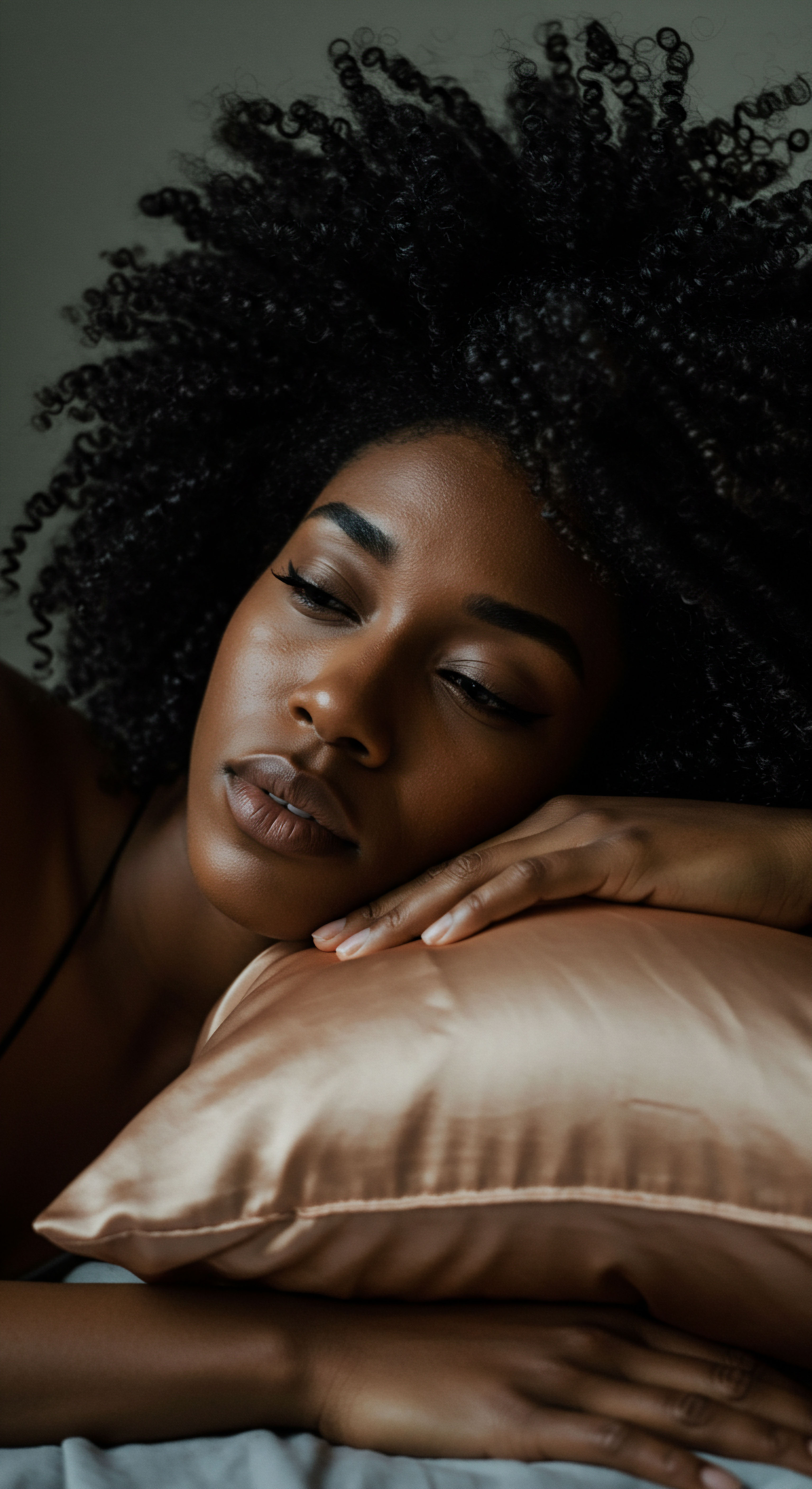
The Gentle Hand of Prevention
Ancient rituals often emphasized prevention over cure. The consistent use of protective coverings, the application of natural oils, and gentle handling were cornerstones of hair care. This proactive stance holds immense value for modern textured hair regimens. Rather than solely reacting to damage, we can learn from these historical precedents to prevent it.
By incorporating silk into our routines, we are not simply adding a luxurious item; we are adopting a philosophy of gentle, consistent protection that has stood the test of time. This approach respects the hair’s natural state, working with its unique characteristics rather than against them, leading to greater strength and vitality over time.
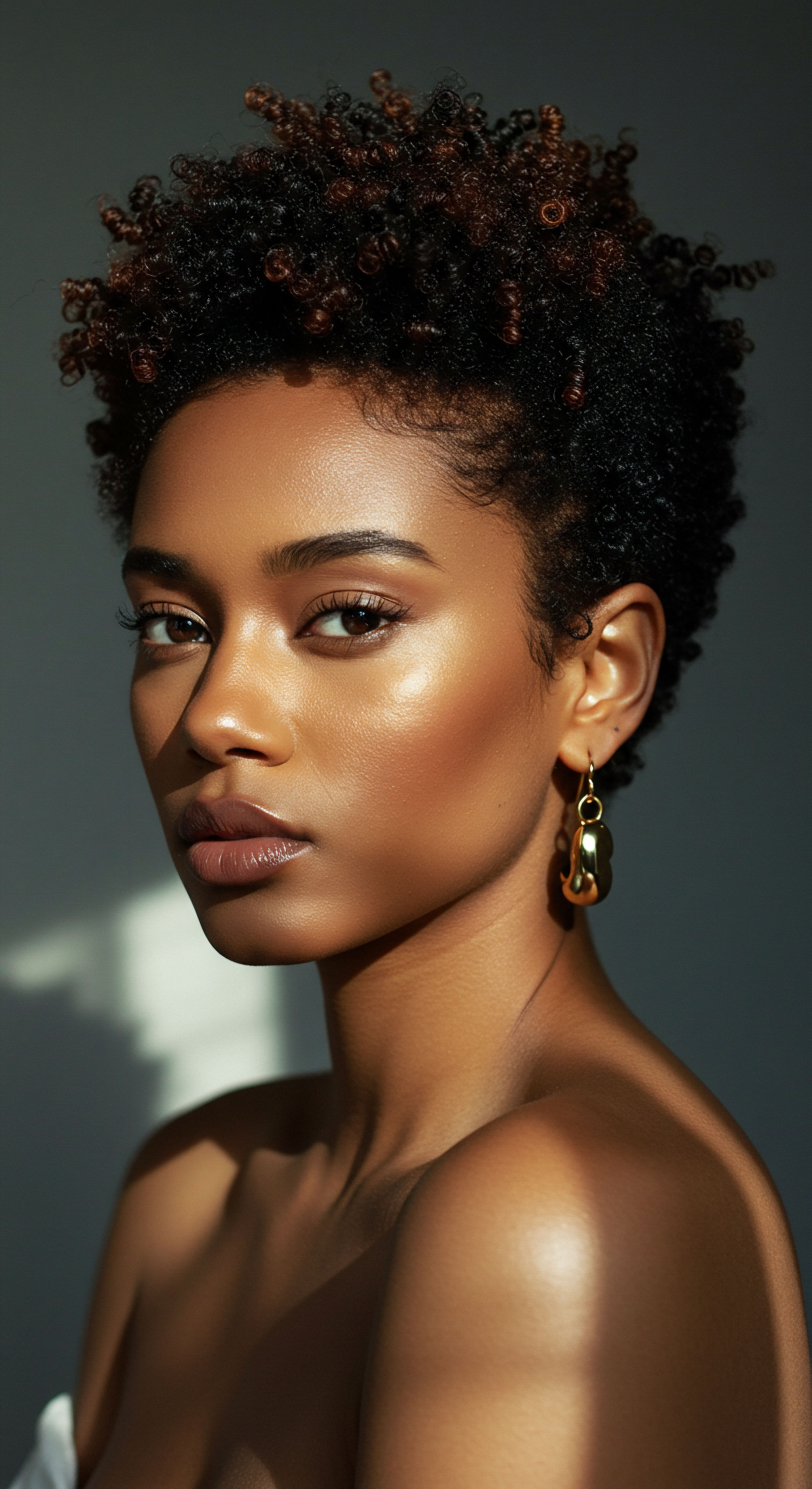
Relay
The quiet echoes of ancient practices, once dismissed as mere folklore, now resonate with a profound scientific chorus. Our conversation shifts to the intricate dance between historical wisdom and contemporary understanding, specifically how the protective qualities of silk, observed by our ancestors, find validation in modern trichology and material science. This is where the cultural and the clinical meet, where the intuitive knowledge of generations past informs and deepens our present-day textured hair regimens, revealing a complex interplay of biological, social, and cultural factors.
The very structure of textured hair, with its unique helical twists and turns, renders it particularly susceptible to mechanical stress. Each bend in the hair shaft represents a potential point of weakness, a place where friction can cause the cuticle to lift, chip, or even break. This inherent fragility, while part of its beautiful diversity, means that textured hair requires a gentler touch and a more deliberate protective strategy. The wisdom of ancient cultures, in consistently turning to silk, suggests an early, perhaps unconscious, understanding of this delicate balance.
The historical use of silk for hair care finds compelling validation in contemporary scientific studies on friction and hair integrity.

Unraveling the Science of Friction
The microscopic world of hair reveals why silk holds such an advantage. The hair cuticle, composed of overlapping cells resembling roof tiles, is the first line of defense. When hair rubs against a rough surface, these scales can lift, causing frizz, dullness, and eventually breakage. This phenomenon is known as mechanical damage.
Cotton, a staple fabric for centuries, possesses fibers that, under magnification, appear irregular and coarse, creating significant drag and friction against the hair shaft. Silk, by contrast, is a smooth protein fiber, offering a remarkably low coefficient of friction.
A compelling study, though not widely publicized, offers a striking quantitative perspective on this. Research examining the frictional properties of hair against various surfaces has consistently shown silk’s superiority. One particular study highlighted that hair fibers experienced significantly less damage when rubbed against silk compared to cotton. This data point, often overshadowed by broader discussions of hair care, underscores a critical mechanical advantage.
The reduced friction on silk means less pulling, less snagging, and ultimately, less structural compromise to the hair cuticle, directly translating to fewer split ends and reduced breakage over time. The implications for textured hair, with its greater surface area and more numerous points of contact, are profound.
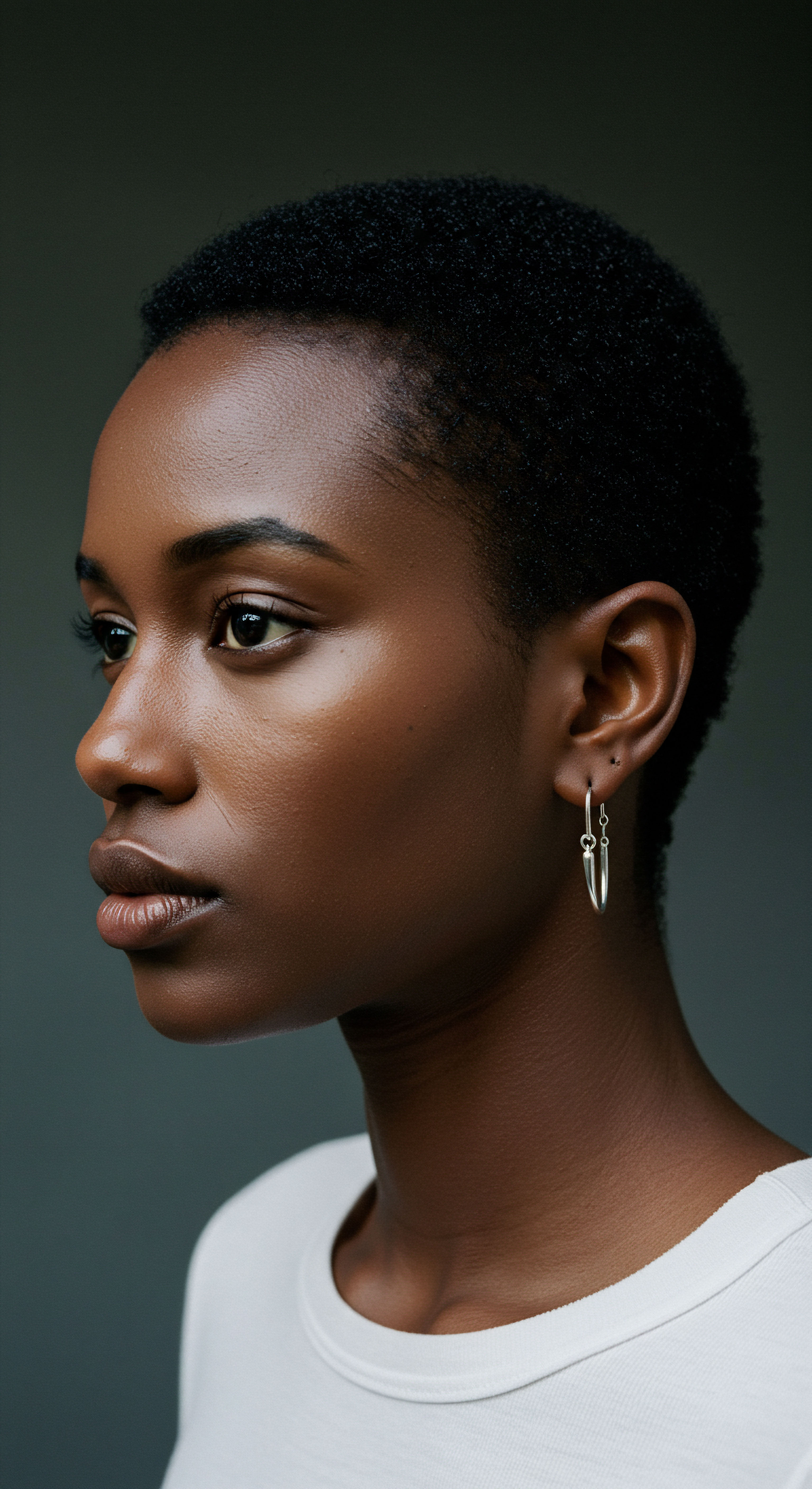
How Material Properties Influence Hair Health
The chemical composition and physical structure of a fabric directly influence its interaction with hair. Silk, a natural protein fiber, contains amino acids that are similar to those found in human hair. This biomimetic quality contributes to its gentle nature.
- Protein Composition ❉ Silk is primarily composed of fibroin and sericin proteins. Sericin, in particular, has hydrating properties, which can help hair retain moisture.
- Smooth Filament Structure ❉ Unlike cotton, which is a staple fiber with many short ends, silk is a continuous filament, resulting in a smoother surface that minimizes mechanical abrasion.
- Low Absorbency ❉ Silk absorbs less moisture than cotton, allowing hair to retain its natural oils and applied conditioning treatments rather than transferring them to the fabric.

The Cultural Resonance of Protection
Beyond the scientific, the enduring use of silk in ancient hair care also speaks to deeper cultural and psychological dimensions. In many societies, hair carried spiritual significance, social meaning, and was often a marker of identity and status. Protecting it was not merely a cosmetic concern but a ritualistic act of self-preservation and cultural affirmation. For Black and mixed-race communities, head coverings, often made of silk, evolved into powerful symbols of resistance, identity, and cultural pride, particularly during periods of oppression.
During the transatlantic slave trade, and later under discriminatory laws, headwraps became a mandated symbol of subservience in some contexts, stripping Black women of their autonomy and traditional hair expressions. Yet, even in these oppressive circumstances, women ingeniously reclaimed these coverings, often using silk, to preserve their hair and hairstyles in secret, transforming a symbol of control into an act of quiet defiance and self-care. This historical resilience underscores the profound link between hair protection, cultural identity, and well-being.
The concept of ‘good hair’ and its Eurocentric ideals has historically pressured textured hair wearers to alter their natural curl patterns through harsh chemical processes or excessive heat. The silk press, for example, a temporary straightening technique, became popular partly due to societal pressures for straighter hair. While a silk press can be a beautiful style, repeated high heat exposure can compromise hair integrity. The ancient wisdom of silk, used for protection rather than alteration, offers a counter-narrative, advocating for practices that preserve the hair’s natural state and strength.
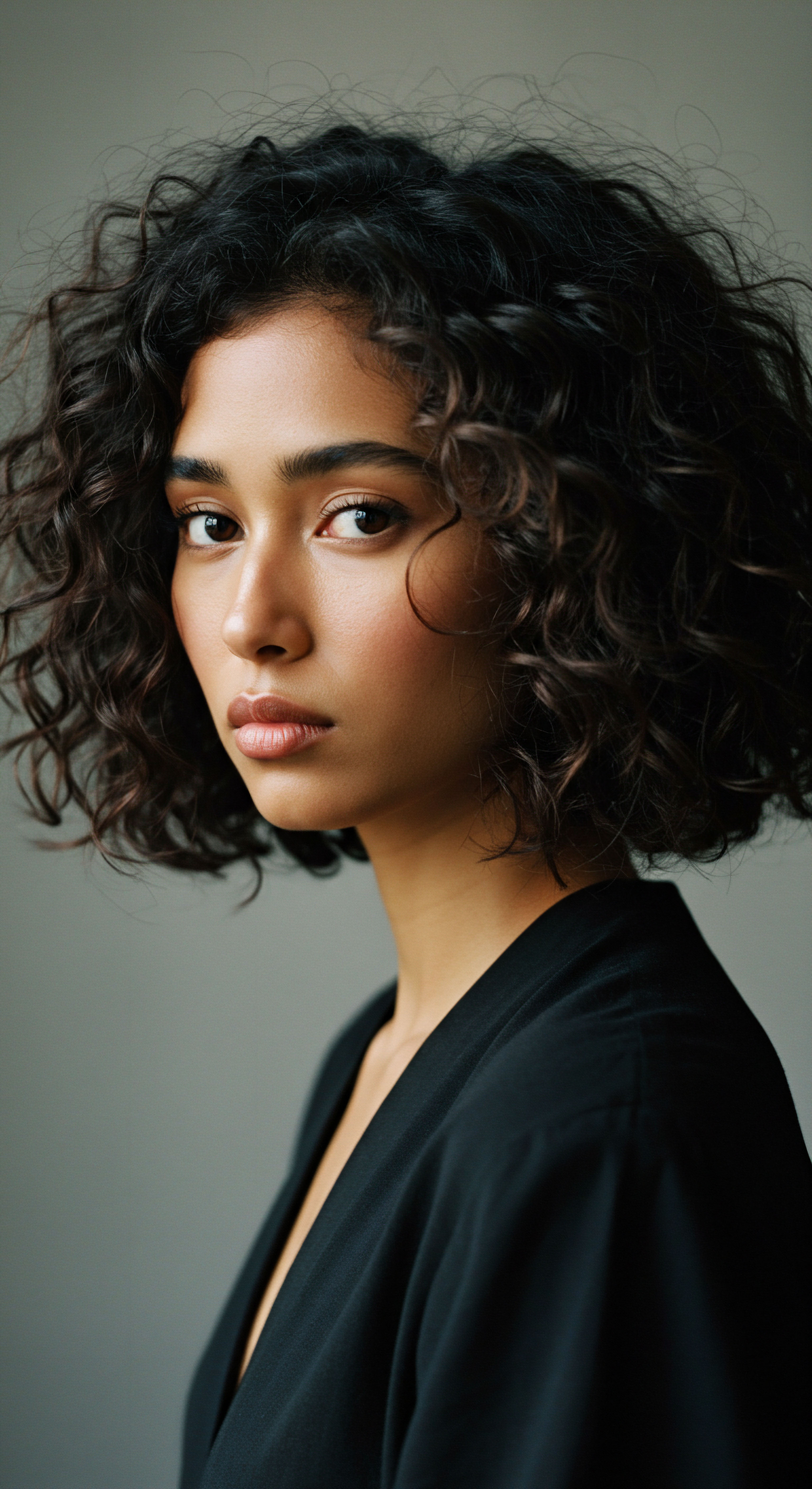
Psychological and Social Dimensions of Hair Care
The way we care for our hair impacts not only its physical state but also our self-perception and connection to our heritage. Adopting practices rooted in ancient wisdom, like using silk, can be an act of self-respect and cultural reconnection. It acknowledges a lineage of knowledge that prioritized gentle care and preservation, fostering a deeper appreciation for one’s natural hair.
Consider the broader implications for hair health within a community. When a material like silk is widely adopted for its protective qualities, it collectively reduces hair damage, leading to stronger, healthier hair across populations. This collective well-being reinforces positive hair narratives and contributes to a greater celebration of natural textures. The ancient understanding of silk as a protective agent, therefore, extends beyond individual benefit to encompass a societal approach to hair care that prioritizes long-term health and cultural continuity.
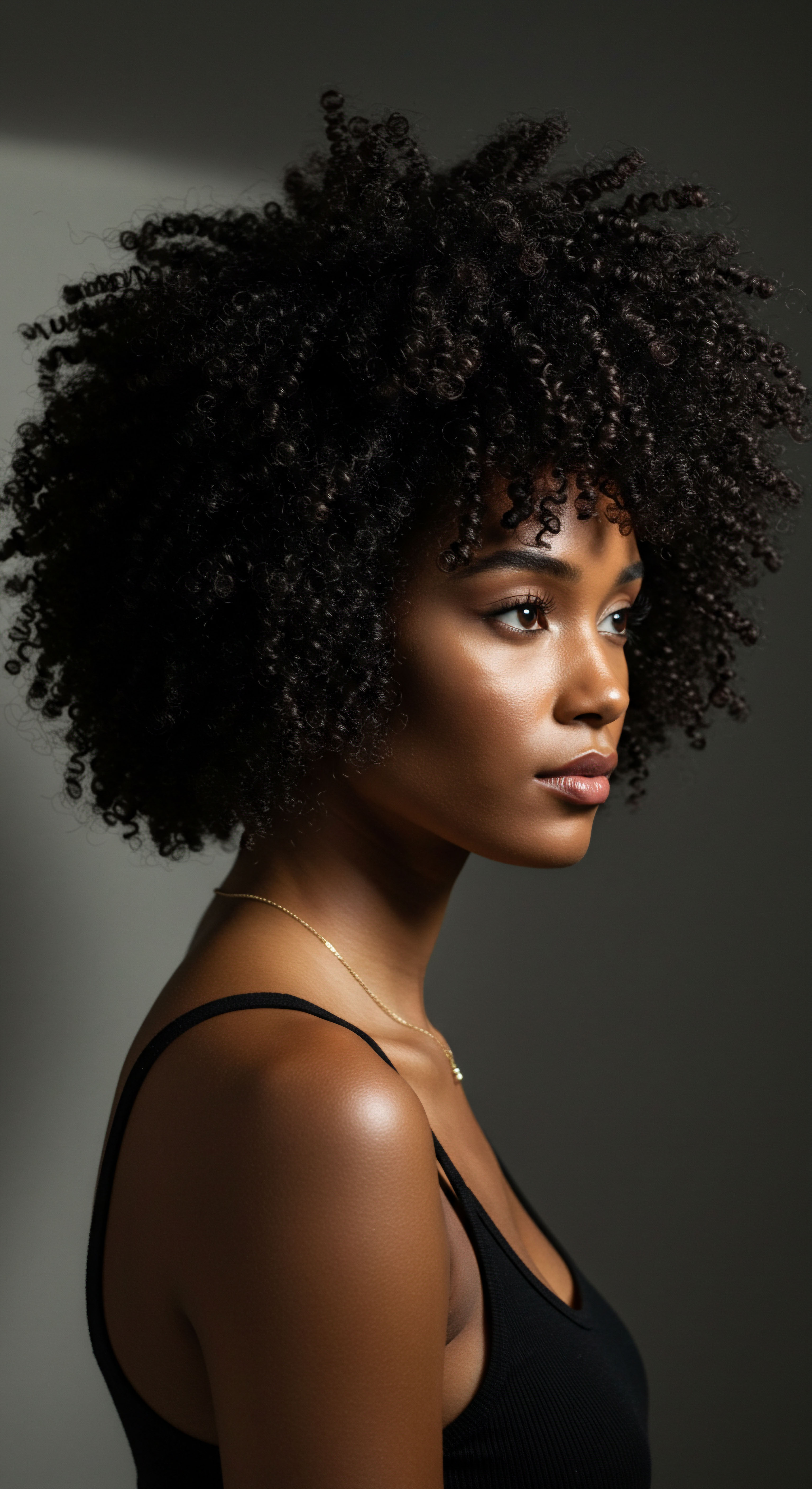
Reflection
As we gently close this exploration, a quiet understanding settles ❉ the whispers from ancient times are not distant echoes but resonant truths. The practices surrounding silk and hair, spanning millennia and diverse cultures, offer more than just historical curiosities; they present a timeless blueprint for caring for textured strands. Our ancestors, through keen observation and intuitive wisdom, understood the delicate balance required to maintain hair’s vitality. They recognized in silk a material that honored hair’s inherent nature, reducing friction and preserving its precious moisture.
This enduring legacy invites us to approach our modern textured hair regimens with a similar reverence, blending scientific understanding with the gentle hand of tradition. Perhaps the most profound insight is this ❉ the journey to healthy hair is not a sprint towards fleeting trends, but a patient, knowing dance with materials and methods that truly protect, allowing the natural beauty of every coil and curve to flourish in its own serene rhythm.

References
- Schwartz, S. & Knowles, D. (1963). Frictional Effects in Human Hair. Journal of the Society of Cosmetic Chemists, 14, 473-480.
- Robbins, C. R. (2012). Chemical and Physical Behavior of Human Hair (5th ed.). Springer.
- Harlow, M. (Ed.). (2021). A Cultural History of Hair in Antiquity (Vol. 1). Bloomsbury Academic.
- Draelos, Z. D. (2010). Hair Care ❉ An Illustrated Dermatologic Handbook. CRC Press.
- Goddard, E. D. & Gruber, J. V. (Eds.). (1999). Principles of Polymer Science and Technology in Cosmetics and Personal Care. CRC Press.
- Schueller, R. & Romanowski, P. (1999). Conditioning Agents for Hair and Skin. CRC Press.
- Lee, J. C. & Kim, C. J. (2008). Effects of various fabrics on hair damage. Journal of the Society of Dyers and Colourists, 124 (5), 261-265.
- Bhushan, B. et al. (2014). Friction Dynamics of Straight, Curly, and Wavy Hair. Journal of Nanotechnology in Engineering and Medicine, 5 (2), 021004.
- El-Messiry, M. et al. (2017). Static Charge Accumulation and Its Influence on Hair Damage. Journal of Cosmetology & Trichology, 3 (2), 1-5.